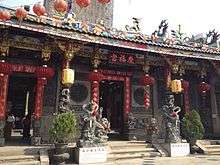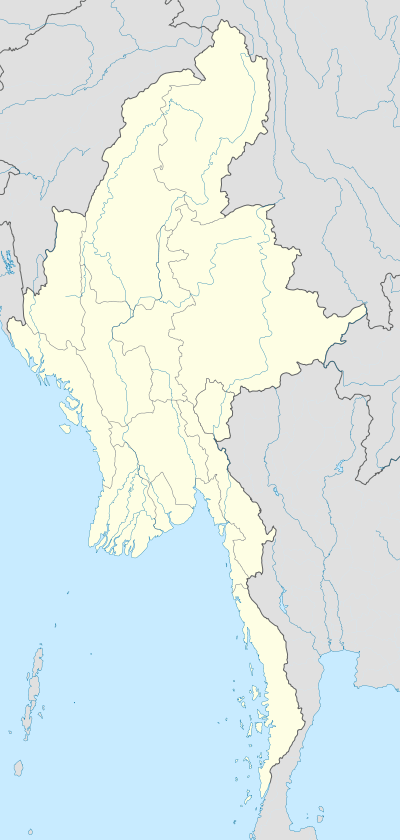Kheng Hock Keong
The Kheng Hock Keong, also known as the Kheng Hock Keong or Qingfu Temple, is the largest and oldest temple to the Chinese sea-goddess Mazu in Yangon, Burma. It is located on the corner of Sintodan Street and Strand Road in Latha Township. It was originally built as a wooden temple in 1861 and completed in 1863.[1] A new brick building was completed in 1903, costing over 153,000 rupees.[1] Kheng Hock Keong is maintained by a Hokkien Chinese clan association.[2] The temple attracts mostly Hokkien and Hakka worshipers, while the other temple in Latha Township, called the Guanyin Gumiao Temple, attracts Cantonese worshipers.
Gallery
| Kheng Hock Keong after World War II, in 1945. |
| Kheng Hock Keong at 2013 Chinese New Year |
| Kheng Hock Keong at night |
|
References
- 1 2 Chen, Yi-Sein (1966). "The Chinese in Rangoon during the 18th and 19th Centuries". Essays Offered to G. H. Luce by His Colleagues and Friends in Honour of His Seventy-Fifth Birthday. Volume 1: Papers on Asian History, Religion, Languages, Literature, Music Folklore, and Anthropology. Artibus Asiae Publishers. 23: 107–111. JSTOR 1522640.
- ↑ http://www.chinatownology.com/kheng_hock_keong.html
See also







